If you’ve been struggling to achieve your weight loss goals, the gastric sleeve surgery could be the tool you’ve been looking for.
This procedure has helped countless individuals take control of their health, offering an effective and long-term solution for managing severe obesity.
With benefits that extend beyond just shedding pounds, the gastric sleeve can be a transformative step toward a healthier and more active lifestyle.
What Is the Gastric Sleeve Surgery?
The gastric sleeve is a type of bariatric surgery designed to help patients achieve significant weight loss by reducing the size of the stomach. During the procedure, a portion of the stomach is removed, leaving a smaller, sleeve-shaped stomach that limits how much food you can eat at one time.
Unlike gastric bypass, which reroutes part of the digestive system, the gastric sleeve keeps the digestive process intact, making it a simpler yet highly effective option.
This surgery is particularly beneficial for individuals with obesity-related conditions such as type 2 diabetes, high blood pressure, or sleep apnea. Patients typically lose 50-60% of their excess weight within 12 to 18 months, and many experience improvements in overall health and a reduced risk of serious medical issues.
For those ready to make a lasting change, the gastric sleeve offers more than just weight loss—it provides a pathway to a healthier, more vibrant life.
In this article, we’ll dive deeper into how the gastric sleeve works, its benefits, the recovery process, and why it’s become one of the most preferred options for those seeking a long-term weight loss solution.
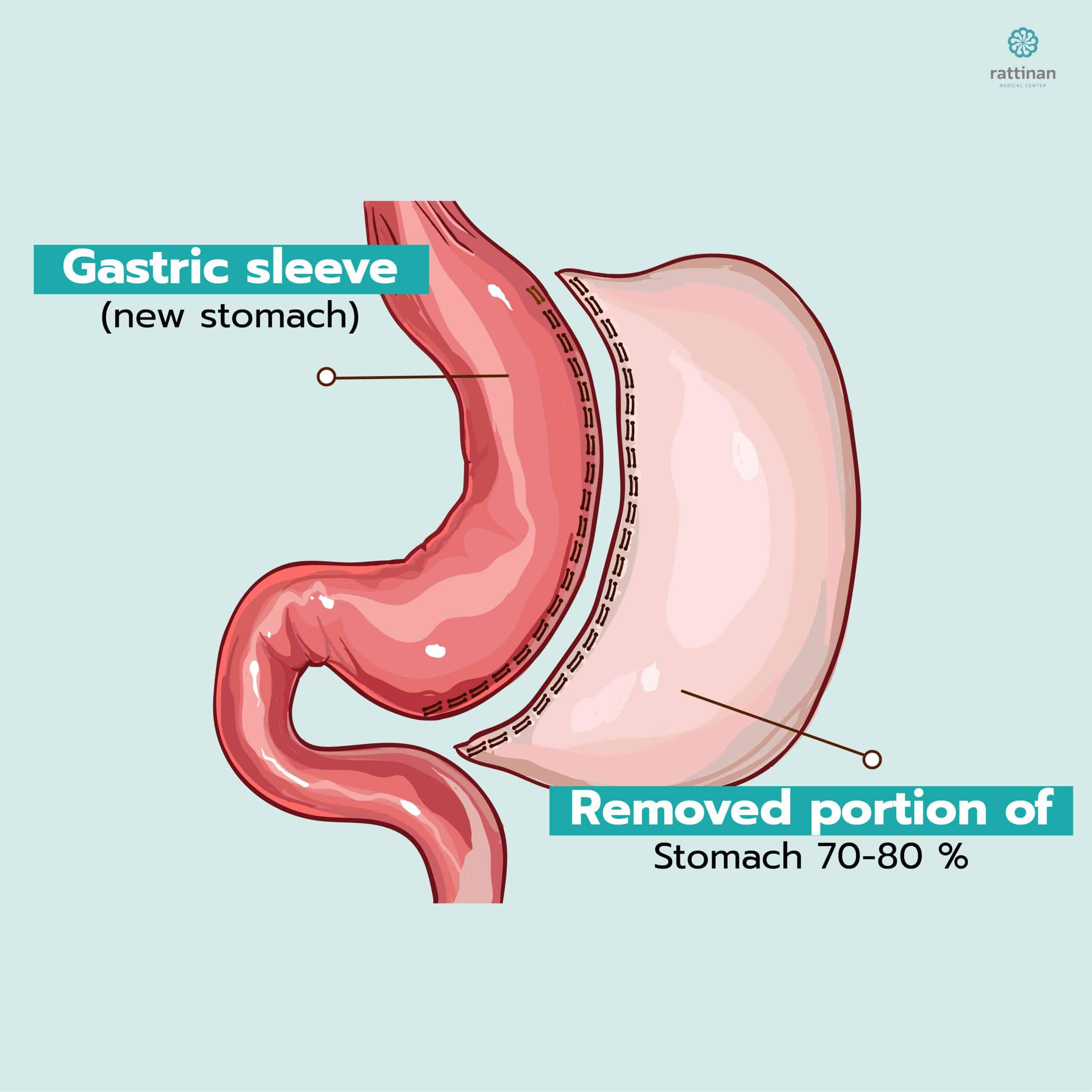
How the Gastric Sleeve Surgery Works
The gastric sleeve surgery, also known as sleeve gastrectomy, is a straightforward yet highly effective bariatric surgery designed to reduce the size of the stomach and promote weight loss.
This procedure is performed laparoscopically, meaning it involves small incisions and the use of a camera-guided instrument called a laparoscope. This minimally invasive approach offers a faster recovery, less pain, and fewer complications compared to traditional open surgery.
Step-by-Step Surgical Process
- Anesthesia: The procedure begins with general anesthesia, ensuring the patient is comfortable and pain-free throughout the surgery.
- Small Incisions: The surgeon makes 4-5 small incisions in the abdomen, each typically less than one centimeter long. These incisions provide access for the laparoscope and surgical instruments.
- Resection of the Stomach: Using specialized instruments, the surgeon removes about 75-80% of the stomach, reshaping it into a slender, tube-like form. This smaller stomach, or “sleeve,” drastically reduces the amount of food it can hold, effectively limiting calorie intake.
- Stapling the Stomach: The remaining portion of the stomach is stapled along its length using advanced stapling devices. Techniques like Tri-Staple Technology and manual reinforcement are often employed to ensure a secure and strong staple line, reducing the risk of leaks and complications.
- Leak Testing and Closure: The surgeon conducts a leak test to confirm that the staple line is secure. The surgical instruments are then removed, and the small incisions are closed with sutures or surgical glue.
How Gastric Sleeve Technique Aids in Weight Reduction:
The gastric sleeve technique supports weight reduction through two primary mechanisms:
- Restriction of Food Intake: By significantly reducing the stomach’s capacity, the procedure limits the amount of food that can be consumed at one time. Patients feel full after eating much smaller portions, naturally helping to control calorie intake.
- Hormonal Changes: The surgery removes the section of the stomach responsible for producing ghrelin, the hormone that stimulates hunger. This reduction in ghrelin levels leads to decreased appetite and fewer food cravings, making it easier for patients to follow a reduced-calorie diet.
Advantages of the Minimally Invasive Approach:
The gastric sleeve technique, performed using the laparoscopic method, offers significant benefits for those on a weight loss journey.
With smaller scars, shorter hospital stays, and quicker recovery times, the procedure is both efficient and manageable. Most patients are able to walk within hours after surgery and return to normal activities in just 2–4 weeks.
This method provides a safe and effective path to meaningful weight loss, especially when paired with lifestyle changes and adherence to post-surgery guidelines. In the sections ahead, we’ll explore its key benefits, recovery process, and comparisons to other weight loss options.
Key Benefits of the Gastric Sleeve Technique for Weight Loss Surgery
The gastric sleeve technique offers numerous benefits that make it a leading choice for individuals seeking long-term weight loss. By reducing the size of the stomach and influencing hunger-regulating hormones, this procedure not only aids in shedding excess weight but also contributes to overall health improvements. Here are some of the key benefits of the gastric sleeve technique:
- Substantial and Sustainable Weight Loss
One of the primary benefits of the gastric sleeve technique is its ability to promote considerable and lasting weight loss. Most patients can expect to lose 50-60% of their excess weight within the first 12 to 18 months after surgery. This weight reduction can significantly enhance quality of life, improve mobility, and increase overall energy levels, making everyday activities more manageable and enjoyable.
- Reduced Hunger and Appetite
The gastric sleeve technique effectively reduces hunger by removing the part of the stomach that produces ghrelin, often referred to as the “hunger hormone.” With lower ghrelin levels, patients experience a noticeable decrease in appetite and food cravings, making it easier to stick to smaller portions and a healthier diet. This hormonal change is crucial for long-term weight management and helps patients maintain their weight loss without feeling deprived.
- Improvement in Obesity-Related Health Conditions
Beyond weight loss, the gastric sleeve technique offers significant health benefits by improving or resolving obesity-related conditions such as:
- Type 2 Diabetes: Many patients see improved blood sugar control, with some achieving remission from diabetes.
- High Blood Pressure: Losing weight can help lower blood pressure, reducing the risk of heart disease and stroke.
- Sleep Apnea: Weight loss often alleviates sleep apnea symptoms, leading to better sleep quality and overall health.
- High Cholesterol and Heart Health: The procedure can help improve cholesterol levels, supporting cardiovascular health and reducing the risk of heart disease.
- Enhanced Quality of Life and Mental Well-Being
Weight loss achieved through the gastric sleeve technique extends beyond physical health. Many patients report improved self-esteem, confidence, and mental well-being after surgery. The ability to participate more fully in social activities, wear desired clothing, and enjoy a more active lifestyle contributes to a positive impact on mental health, reducing anxiety and depression commonly associated with obesity.
- No Foreign Objects or Complex Digestive Rerouting
Unlike other bariatric surgeries, such as gastric banding or gastric bypass, the gastric sleeve technique does not involve the placement of foreign objects or rerouting of the intestines. This makes the procedure simpler, with fewer long-term complications related to device issues, slippage, or nutrient malabsorption. The stomach continues to function normally, allowing for a more natural digestion process.
- Faster Recovery with Minimal Scarring
Performed laparoscopically, the gastric sleeve technique uses small incisions, resulting in less scarring, reduced postoperative pain, and quicker recovery compared to open surgery. Most patients are able to resume light activities within a week or two and return to normal routines in about four to six weeks, making it a highly manageable procedure.
- Long-Term Success with Ongoing Support
The gastric sleeve provides a strong foundation for long-term weight management when combined with healthy eating and regular exercise. Ongoing support from healthcare providers helps patients maintain weight loss and overall health.
This surgery isn’t just about weight loss—it’s about gaining a healthier, more active life. With reduced hunger and improved health, the gastric sleeve offers a powerful solution for overcoming obesity. Next, we’ll explore the recovery process for a successful outcome.
The Unique Triple Lock Technique
At the forefront of ensuring safety and success in the gastric sleeve technique is the innovative Triple Lock Technique. This approach combines advanced stapling technology, meticulous manual reinforcement, and a specialized tissue sealant to provide an added layer of security during surgery. These three components work together to minimize risks, particularly the risk of leaks—a major concern in bariatric surgeries. Here’s an in-depth look at each element of the Triple Lock Technique:
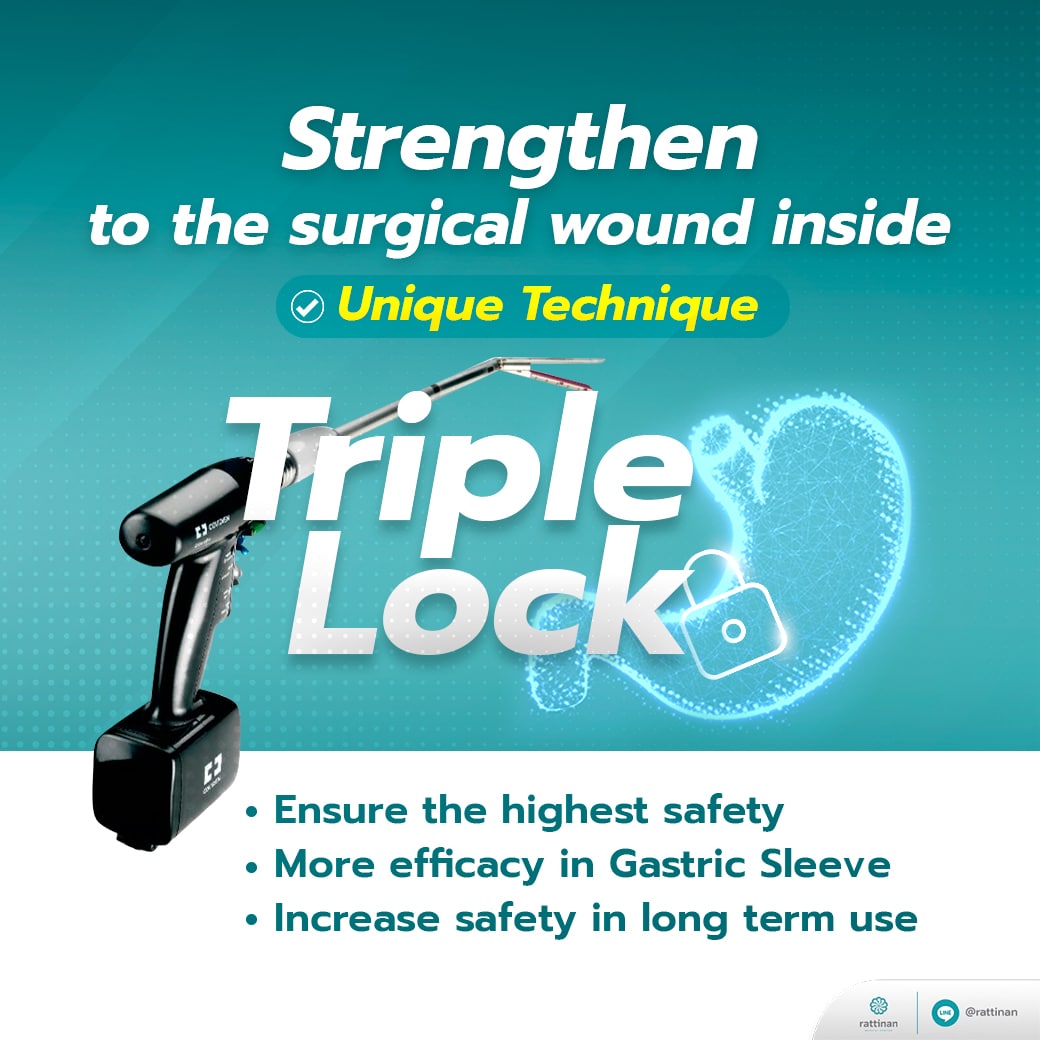
1. Tri-Staple Technology
Tri-Staple Technology by Medtronic brings advanced precision and safety to the gastric sleeve procedure. Using a triple row of staples with varying heights, it adapts seamlessly to different tissue thicknesses for a secure and reliable staple line. This innovative design optimizes compression and enhances blood flow, minimizing the risk of tissue damage and complications while improving outcomes.
- Benefits: Tri-Staple Technology provides consistent stapling across varying tissue thicknesses, which is crucial in patients with complex gastric conditions. It also reduces the pressure exerted on the stomach tissue, leading to fewer issues with leaks and better overall healing.
2. Manual Staple Reinforcement
After the initial stapling, our expert surgeons go a step further by manually reinforcing the staple line with precise sutures. This extra measure enhances the staple line’s strength, reducing the risk of leaks and other complications. By adding this layer of protection, we help ensure long-term durability and prevent the gastric pouch from stretching over time, supporting lasting weight loss results.
- Benefits: Manual reinforcement further secures the staple line, minimizing the risk of post-surgical leaks, which are one of the most serious complications in gastric sleeve surgeries. It also contributes to the long-term stability of the new stomach shape, helping patients maintain their weight loss.
3. Tisseel Tissue Sealant
The final component of the Triple Lock Technique is the application of Tisseel Tissue Sealant, a fibrin-based adhesive that acts as a biological glue. Tisseel is applied along the staple line, creating a strong, flexible seal that further protects against leaks. This tissue sealant mimics the body’s natural clotting process, providing immediate support to the staple line and enhancing the overall safety of the procedure.
- Benefits: Tisseel Tissue Sealant not only acts as a barrier to leaks but also promotes healing by supporting the tissue’s natural recovery process. Its biocompatible properties ensure that the seal integrates seamlessly with the body’s tissues, offering durable protection without any adverse reactions.
Why the Triple Lock Technique Matters
The Triple Lock Technique showcases our dedication to patient safety and surgical precision. By combining Tri-Staple Technology, manual reinforcement, and Tisseel Tissue Sealant, we add multiple layers of protection to reduce the risk of complications, particularly severe leaks. This approach has delivered exceptional results, with zero leaks reported in our bariatric surgeries.
Choosing the gastric sleeve technique with the Triple Lock approach means prioritizing your safety and long-term success.
Our advanced methods help you achieve your weight loss goals with care and expertise. Up next, we’ll walk you through the recovery process and what to expect after your procedure.
Preparing for Gastric Sleeve Surgery
Proper preparation is essential for a successful gastric sleeve surgery and a smooth recovery.
Before undergoing the procedure, patients are required to go through a comprehensive pre-operative process, including medical assessments, consultations with healthcare professionals, and specific preparation steps to ensure they are physically and mentally ready for surgery.
Here’s what to expect and how to prepare effectively:
1. Pre-Operative Assessments
Pre-operative assessments are critical to evaluating a patient’s overall health and suitability for the gastric sleeve technique. These assessments help identify any potential risks and ensure that the surgery is tailored to the individual’s needs. Key components of the pre-operative evaluation include:
- Medical History and Physical Examination: A thorough review of your medical history, including previous surgeries, current medications, and any existing health conditions, is conducted. A physical examination helps assess overall fitness for surgery.
- Laboratory Tests: Blood tests are performed to check for conditions such as anemia, blood clotting issues, and nutritional deficiencies. Tests may also include liver and kidney function assessments to ensure your body is in optimal condition for surgery.
- Imaging Studies: In some cases, imaging tests like an abdominal ultrasound or X-rays are used to evaluate the structure of your stomach and surrounding organs. This helps the surgical team understand any anatomical considerations that might affect the procedure.
- Cardiac and Pulmonary Evaluations: Patients with underlying heart or lung conditions may require additional testing, such as an ECG or pulmonary function test, to assess their cardiovascular and respiratory fitness for surgery.
- Sleep Study: For patients with suspected or known sleep apnea, a sleep study may be recommended. Sleep apnea can affect anesthesia management during surgery, so it’s important to assess and address this condition beforehand.
2. Consultations with Healthcare Professionals
Prior to surgery, you will meet with various healthcare professionals who play a vital role in your pre-operative preparation and post-operative care:
- Bariatric Surgeon: The surgeon will discuss the details of the gastric sleeve technique, including the expected outcomes, potential risks, and the specifics of your surgical plan. This is also an opportunity to ask any questions and address any concerns you may have about the procedure.
- Dietitian/Nutritionist: A dietitian will provide guidance on pre-surgery dietary changes and help you understand the nutritional requirements needed for optimal recovery. You may be advised to follow a special pre-operative diet, such as a low-calorie, high-protein plan, to reduce liver size and make the surgery safer.
- Psychologist or Counselor: Mental and emotional preparation is just as important as physical readiness. Meeting with a psychologist can help assess your mental preparedness for the lifestyle changes required after surgery and address any emotional concerns related to eating habits, stress, or anxiety.
3. Preparation Tips for a Smooth Surgery Experience
To ensure you are fully prepared for your gastric sleeve surgery, follow these essential tips:
- Follow the Pre-Surgery Diet: Your surgeon or dietitian may recommend a specific diet in the weeks leading up to surgery. This diet is designed to reduce liver size, making the surgery easier and safer. Typically, it includes low-fat, low-sugar foods and high-protein shakes.
- Avoid Smoking and Alcohol: Smoking and alcohol can increase the risk of complications during and after surgery. It’s important to quit smoking and avoid alcohol at least a few weeks before your procedure to improve healing and recovery.
- Stop Certain Medications: You may be advised to stop taking certain medications, such as blood thinners, anti-inflammatory drugs, or herbal supplements, that can increase the risk of bleeding. Always consult your doctor before stopping any prescribed medication.
- Stay Active: Engage in light physical activity, such as walking, to improve your overall fitness and circulation before surgery. Regular movement helps prepare your body for the physical demands of recovery.
- Arrange Post-Surgery Support: Plan for help at home after surgery. Arrange for a family member or friend to assist you during the initial days of recovery, as you may have limited mobility and need help with daily activities.
- Prepare Your Home: Set up a comfortable recovery space at home with easy access to essentials. Stock up on recommended post-surgery foods, such as protein shakes and soft, nutrient-rich options that align with your post-operative diet.
Recovery and Post-Operative Care
Recovering from gastric sleeve surgery involves a carefully structured process that includes a specific recovery timeline, dietary adjustments, and ongoing follow-up care. Proper post-operative care is essential to ensure a smooth recovery, minimize complications, and support long-term weight loss success. Below, we outline the key aspects of recovery and post-operative care following the gastric sleeve technique.
1. Recovery Timeline
The recovery process varies for each patient, but most individuals can expect to return to their normal activities within a few weeks after surgery. Here is a general timeline of what to expect during the recovery period:
- Immediately After Surgery: Following the surgery, you will be taken to the recovery room where your vital signs will be closely monitored. Pain and nausea are common in the first few hours but are typically well-managed with medication. You will be encouraged to start walking within a few hours to promote blood circulation and reduce the risk of blood clots.
- Hospital Stay (1-3 Days): Most patients stay in the hospital for one to three days, depending on their individual progress. During this time, your healthcare team will monitor your recovery, manage pain, and ensure you are able to tolerate clear liquids.
- First Week Post-Surgery: In the first week after discharge, you will need to rest and avoid strenuous activities. Focus on hydration and follow the initial liquid diet plan provided by your healthcare team. Walking and light movements are encouraged to aid in healing and prevent complications.
- Weeks 2-4: By the second week, you will gradually transition from clear liquids to pureed foods, followed by soft foods. Energy levels will start to improve, and you can slowly resume light activities. However, heavy lifting and vigorous exercise should be avoided until fully cleared by your surgeon.
- One Month and Beyond: Around four weeks post-surgery, most patients can start incorporating solid foods into their diet as tolerated, while paying close attention to portion sizes and nutritional content. By this time, you can gradually return to normal activities, including light exercise like walking, swimming, or cycling.
2. Dietary Guidelines for Optimal Recovery
Your diet will play a crucial role in your recovery and long-term success after gastric sleeve surgery. Following the recommended dietary stages is essential to protect your healing stomach and promote proper nutrition. Below are the general dietary stages after surgery:
- Stage 1: Clear Liquids (Days 1-7): During the first week, your diet will consist of clear, sugar-free liquids such as water, broth, sugar-free gelatin, and electrolyte drinks. This helps keep you hydrated without straining your newly reduced stomach.
- Stage 2: Full Liquids (Weeks 2-3): You will gradually introduce full liquids, including protein shakes, low-fat milk, and smooth soups. Protein intake is crucial during this phase to support healing and prevent muscle loss.
- Stage 3: Pureed Foods (Weeks 3-4): The next stage involves pureed or blended foods like smooth yogurt, mashed vegetables, and soft scrambled eggs. Meals should be small, protein-focused, and eaten slowly to avoid discomfort.
- Stage 4: Soft Foods (Weeks 4-6): Soft foods such as cooked vegetables, soft fruits, fish, and lean poultry are introduced. Continue to focus on small, frequent meals, chewing thoroughly, and listening to your body’s fullness cues.
- Stage 5: Regular Foods (After 6 Weeks): Around six weeks post-surgery, you can begin to incorporate a wider variety of solid foods into your diet, focusing on high-protein, low-sugar, and low-fat options. Avoid tough, fibrous foods and carbonated drinks, which can cause discomfort.
3. Long-Term Follow-Up Care
Consistent follow-up care is a key component of your post-operative journey, ensuring that you stay on track with your weight loss goals and maintain optimal health. Follow-up care typically includes:
- Regular Appointments with Your Bariatric Team: Scheduled visits with your surgeon, dietitian, and other healthcare providers help monitor your progress, address any concerns, and adjust your care plan as needed. These appointments are usually more frequent in the first year and then transition to annual check-ups.
- Nutritional Support: Ongoing nutritional guidance helps ensure that you are meeting your dietary needs while avoiding deficiencies. Your dietitian may recommend vitamin and mineral supplements, such as multivitamins, calcium, and vitamin B12, to support long-term health.
- Monitoring for Complications: Although complications are rare, it’s important to watch for signs such as severe pain, persistent vomiting, or difficulty swallowing, which could indicate issues like stricture or nutritional deficiencies. Regular follow-ups help catch and manage these problems early.
- Support Groups and Counseling: Joining a bariatric support group or seeking counseling can provide additional emotional support, motivation, and valuable tips for maintaining your new lifestyle. Sharing experiences with others who have undergone similar journeys can be incredibly beneficial.
- Commitment to a Healthy Lifestyle: Long-term success after gastric sleeve surgery requires a commitment to a healthy lifestyle, including regular exercise and mindful eating habits. Setting realistic goals and staying motivated with the help of your bariatric team will help you maintain your weight loss and overall health.
Recovery and post-operative care are integral parts of the gastric sleeve journey, guiding you toward a healthier, more active life. By following your healthcare team’s instructions, adhering to dietary guidelines, and staying engaged in follow-up care, you can achieve lasting weight loss and enjoy the full benefits of this transformative procedure. In the next section, we’ll discuss the expected outcomes and results of the gastric sleeve technique.
Expected Outcomes and Results
The gastric sleeve technique is known for producing remarkable outcomes in terms of weight loss and overall health improvements. While individual results can vary based on factors such as starting weight, adherence to post-surgery guidelines, and lifestyle changes, the majority of patients experience significant benefits that extend beyond just shedding excess pounds. Below, we outline the expected outcomes and health improvements associated with the gastric sleeve procedure.
1. Expected Weight Loss
Patients undergoing the gastric sleeve technique can anticipate substantial weight loss, with most losing around 50-60% of their excess weight within the first 12 to 18 months following surgery. This percentage represents the amount of weight lost compared to the total amount needed to reach a healthy body weight based on height. The pace and extent of weight loss can vary, but the procedure consistently delivers results when patients follow their recommended diet and exercise guidelines.
- First 3 Months: During the initial three months, rapid weight loss is common as your body adjusts to the reduced stomach size and lower calorie intake. Patients may lose 10-20% of their excess weight during this period, as the body shifts into a new metabolic state.
- 6 to 12 Months: As you continue through the first year, weight loss will gradually stabilize but remain steady, with the majority of patients reaching 50-60% of their excess weight loss by the 12-month mark. Regular follow-up appointments help track progress and make any necessary adjustments to your diet or activity levels.
- 12 to 18 Months and Beyond: By 18 months, weight loss typically slows down, and patients enter the maintenance phase, where the focus shifts to sustaining the weight loss achieved. Long-term success depends on adhering to healthy eating patterns and maintaining regular physical activity.
2. Improvement in Obesity-Related Health Conditions
Beyond weight reduction, the gastric sleeve technique has a profound impact on various obesity-related health conditions, often leading to dramatic improvements or complete resolution of these issues. This not only enhances quality of life but also reduces long-term healthcare costs and the need for medication.
- Type 2 Diabetes: Many patients experience improved blood sugar control, with some achieving complete remission of type 2 diabetes. The reduced stomach size and changes in gut hormones contribute to better insulin sensitivity, often allowing patients to reduce or discontinue diabetes medications.
- Hypertension (High Blood Pressure): Significant weight loss can lower blood pressure, reducing the risk of heart disease and stroke. Patients often see a marked decrease in blood pressure levels, with many able to reduce or stop their hypertension medications.
- Sleep Apnea: Weight loss greatly benefits those suffering from sleep apnea, a condition often linked to obesity. Reduced weight can lessen or eliminate the need for CPAP (Continuous Positive Airway Pressure) machines, improving sleep quality and overall energy levels.
- Joint Pain and Mobility: Shedding excess weight alleviates the stress on weight-bearing joints, such as the knees, hips, and lower back. This can lead to reduced pain, enhanced mobility, and a greater ability to engage in physical activities.
- High Cholesterol and Heart Health: Lower cholesterol levels are commonly seen after gastric sleeve surgery, decreasing the risk of cardiovascular disease. Improved lipid profiles help protect against heart attacks and other heart-related conditions.
3. Enhanced Quality of Life
The improvements in physical health following gastric sleeve surgery also contribute to better overall quality of life. Patients often report increased self-confidence, greater participation in social and physical activities, and a more positive outlook on life. These changes not only impact physical well-being but also mental and emotional health.
- Mental Health Improvements: Many patients experience reductions in depression, anxiety, and other mental health conditions that are often linked to obesity. The ability to engage more fully in life, work, and relationships fosters improved emotional well-being.
- Increased Energy Levels: With the significant reduction in body weight, patients typically feel more energetic and capable of participating in activities that were once difficult or impossible. This boost in energy enhances daily living and promotes a more active lifestyle.
- Better Relationships and Social Interactions: Weight loss can positively impact personal relationships, leading to more fulfilling social interactions and a greater willingness to engage with others. Patients often feel less self-conscious and more comfortable in public settings.
4. Long-Term Success with Lifestyle Changes
The long-term success of the gastric sleeve technique largely depends on the patient’s commitment to lifestyle changes, including a balanced diet, regular exercise, and ongoing follow-up care. Patients who actively participate in their recovery and maintain healthy habits can sustain their weight loss and health improvements for years to come.
- Adherence to Dietary Guidelines: Maintaining a diet rich in protein, vegetables, and healthy fats while avoiding high-sugar, high-fat foods is essential for continued success. Portion control and mindful eating practices help patients stay on track.
- Regular Physical Activity: Incorporating regular physical activity, such as walking, strength training, or swimming, supports weight maintenance and improves overall fitness. Staying active helps preserve muscle mass and boosts metabolism.
- Ongoing Support and Monitoring: Regular check-ups with your bariatric team ensure that you receive the guidance and support needed to stay motivated and address any challenges. Support groups and counseling can also provide valuable insights and encouragement.
Overall, the expected outcomes of the gastric sleeve technique extend far beyond weight loss. The profound improvements in health, quality of life, and mental well-being make this procedure a life-changing option for those struggling with obesity. In the next section, we will discuss the potential risks and complications associated with the gastric sleeve technique and how they are managed to ensure the safest possible experience.
How Much Does Gastric Sleeve Surgery Cost?
Procedures Strating Price (THB) Weight Loss Program 16,900 THB Bariatric Surgery 190,000-690,000 THB Sleeve Gastrectomy (Hospital stay: 5 days, 4 nights) 430,000 THB Gastric Bypass Surgery (Hospital stay: 5 days, 4 nights) 600,000 THB Mini Gastric Bypass Surgery (Hospital stay: 5 days, 4 nights) 550,000 THB Conversion of Sleeve to Bypass Surgery (Hospital stay: 5 days, 4 nights) 690,000 THB Endoscopic Suturing of the Stomach (Overstitch) with Scarless Technology (Hospital stay: 2 days, 1 night) 600,000 THB Intragastric Balloon Placement (Scarless Technology) 190,000 THB
Risks and Complications Management
While the gastric sleeve technique is generally safe and highly effective, as with any surgical procedure, it carries some potential risks and complications. Understanding these risks and knowing how they are managed can help patients feel more confident and prepared for surgery. At Rattinan Medical Center, patient safety is our top priority, and we take extensive measures to minimize complications and ensure the best possible outcomes.
1. Potential Risks and Complications
- Staple Line Leaks: One of the most serious risks associated with the gastric sleeve technique is a leak along the staple line where the stomach is cut and stapled. Leakage can lead to infection and other severe complications that may require further surgical intervention.
- Bleeding: There is a risk of bleeding during or after the surgery, which may occur at the staple line or the incision sites. While most cases are minor and resolve on their own, some may require additional treatment.
- Infection: Infections can occur at the incision sites or internally. Proper wound care and sterile surgical techniques are essential to minimize this risk.
- Blood Clots (Deep Vein Thrombosis): Blood clots, particularly in the legs, are a potential risk after any surgery. These clots can sometimes travel to the lungs, causing a pulmonary embolism, which is a serious condition.
- Stricture (Narrowing of the Stomach): A stricture occurs when the newly created stomach sleeve becomes too narrow, leading to difficulty swallowing, nausea, and vomiting. This condition may need treatment with endoscopic dilation to widen the sleeve.
- Nutritional Deficiencies: Due to the reduced stomach size and changes in diet, patients may experience deficiencies in essential nutrients such as iron, vitamin B12, calcium, and vitamin D. Long-term supplementation and regular monitoring are required.
- Gastroesophageal Reflux Disease (GERD): Some patients may develop or experience worsening of acid reflux symptoms after surgery, which can usually be managed with medication.
2. How Risks Are Minimized
To ensure patient safety and minimize the risk of complications, Rattinan Medical Center employs several advanced techniques and best practices throughout the surgical and recovery process:
- Pre-Operative Assessments: Comprehensive pre-operative evaluations help identify any existing health issues that could increase surgical risks. This includes blood tests, cardiac and pulmonary assessments, and a thorough review of the patient’s medical history to optimize their readiness for surgery.
- Triple Lock Technique: Our unique Triple Lock Technique combines advanced Tri-Staple Technology, manual reinforcement of the staple line, and the application of Tisseel Tissue Sealant. This multi-layered approach significantly reduces the risk of staple line leaks, providing extra security during and after the procedure.
- Minimally Invasive Surgery: The gastric sleeve is performed laparoscopically, which involves small incisions rather than a large open cut. This approach reduces the risk of infection, decreases recovery time, and minimizes scarring.
- Antibiotic Prophylaxis: To prevent infections, antibiotics are administered before and during surgery. This precautionary step helps protect against bacterial contamination and lowers the risk of post-surgical infections.
- Blood Clot Prevention: Measures to prevent blood clots include the use of compression stockings, intermittent pneumatic compression devices, and early mobilization. Patients are encouraged to walk and move as soon as possible after surgery to enhance blood flow and reduce clotting risks.
- Pain Management: Effective pain management protocols, including the use of medications and minimally invasive techniques, help ensure patient comfort during recovery. Proper pain control facilitates early movement, which is crucial in preventing complications such as blood clots and pneumonia.
- Nutritional Support and Supplementation: To address the risk of nutritional deficiencies, patients are provided with a tailored supplementation plan, including multivitamins, iron, calcium, and vitamin B12. Regular blood tests are conducted to monitor nutrient levels, ensuring that any deficiencies are promptly managed.
- Post-Operative Monitoring and Follow-Up: Close monitoring during the initial recovery period allows for the early detection and management of any complications. Regular follow-up appointments with your bariatric team help track progress and provide ongoing support to maintain health and well-being.
- Patient Education: Educating patients about the potential risks, signs of complications, and how to care for themselves after surgery is a crucial part of our approach. By empowering patients with knowledge, we help them play an active role in their recovery, recognizing early symptoms of issues and seeking timely medical assistance when needed.
3. Commitment to Safety and Excellence
At Rattinan Medical Center, our commitment to safety extends beyond the operating room. We continuously strive to improve our techniques, adopt the latest advancements in bariatric surgery, and provide a supportive environment for all our patients. By prioritizing a comprehensive, patient-centered approach, we minimize risks and enhance the overall experience of those undergoing the gastric sleeve technique.
Understanding the potential risks and how they are managed can help patients feel more at ease about their decision to undergo surgery. With expert surgical care, advanced safety protocols, and a dedicated support team, you can confidently embark on your journey toward better health and a more fulfilling life. In the next section, we will explore the advanced bariatric options available at Rattinan Medical Center, including how the gastric sleeve compares to other weight loss surgeries.
Success Stories and Patient Testimonials
Start Your Journey with Rattinan Medical Center
Embarking on a weight loss journey with the gastric sleeve technique is a life-changing decision, and Rattinan Medical Center is here to guide you every step of the way. Our dedicated team of experienced bariatric surgeons, dietitians, and support staff is committed to providing personalized care tailored to your needs, ensuring the best possible outcomes. Here’s how you can take the first step towards a healthier, more fulfilling life:
1. Schedule a Free Consultation
The first step in your journey is scheduling a free consultation with our expert bariatric team. During this consultation, our specialists will discuss your weight loss goals, evaluate your health status, and determine if the gastric sleeve technique is the right option for you. This is an excellent opportunity to ask questions, understand the procedure, and learn more about what to expect before, during, and after surgery.
Our Doctor

Dr. Panot Yimcharoen
Surgeon

Dr. Setthasiri Pantanakul
Surgeon

Dr. Dudsadee Surakitbowon
Surgeon

Dr. Krittin Ousirimaneechai
Endocrinologist

Dr. Suchada Prapruettham
Anesthesiologist
Dr. Nattakhan Hoontanee
Anesthesiologist
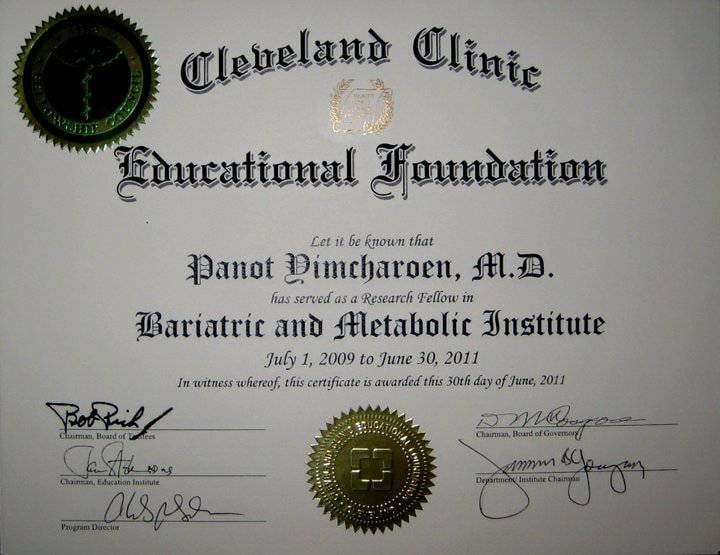
Our team includes American-trained bariatric surgeons who refined their skills at the esteemed Cleveland Clinic. With expertise dating back to 1999, they uphold world-class standards, setting themselves apart from general surgeons with only basic training in sleeve gastrectomy—the simplest form of bariatric surgery.
Our surgeons have dedicated additional years to specialized training in Minimally Invasive Surgery (MIS) and extra two years in bariatric surgery training, ensuring the highest quality of care.
2. Pre-Operative Assessment and Planning
Once you decide to proceed, we will conduct a comprehensive pre-operative assessment to ensure you are fully prepared for surgery. This includes medical evaluations, lab tests, imaging studies, and meetings with your surgeon and dietitian. Our goal is to provide a tailored plan that sets you up for success and addresses any health concerns that need to be managed before the procedure.
3. Personalized Support and Guidance
Our team will guide you through every stage of your preparation, from dietary recommendations to mental health support. We offer resources and advice on how to prepare your body and mind for surgery, ensuring you are confident and ready for this transformative journey. You’ll receive detailed instructions on pre-surgery diets, medication adjustments, and any other preparations needed for a smooth experience.
4. Undergoing Your Gastric Sleeve Surgery
On the day of your surgery, you’ll be in the hands of our skilled surgeons who utilize the latest techniques, including the unique Triple Lock Technique, to ensure your safety and the best possible outcomes. Our state-of-the-art facilities and compassionate care environment provide a comfortable setting for your procedure and recovery.
5. Post-Operative Care and Follow-Up
After your surgery, you’ll receive ongoing support and follow-up care to monitor your progress. Our team will work closely with you to adjust your diet, manage any challenges, and provide the tools needed for long-term success. Regular check-ups and access to our support network help keep you motivated and on track as you adapt to your new, healthier lifestyle.
6. Explore More About Gastric Sleeve Surgery in Thailand
If you’re interested in learning more about gastric sleeve surgery and how it has helped many achieve their weight loss goals, you can explore our detailed guide on Gastric Sleeve Surgery in Bangkok, Thailand. This article provides an in-depth look at the benefits, surgical techniques, and what sets Rattinan Medical Center apart as a leader in bariatric care.
Take the First Step Today
Your journey to better health starts with a single step. Contact Rattinan Medical Center today to schedule your free consultation and begin your transformation with the gastric sleeve technique. Whether through phone, email, or direct messaging, our team is ready to assist you in taking charge of your health and embracing a brighter future.
Let us help you achieve the weight loss results you’ve been striving for and support you every step of the way. At Rattinan Medical Center, we are dedicated to your success, from your first consultation to your long-term follow-up care.
Frequently Asked Question
Does Gastric Sleeve Surgery Hurt?
Does Gastric Sleeve Surgery Hurt?
Yes, gastric sleeve surgery involves post-operative pain since it’s a surgical procedure, but it’s actively managed and decreases quickly.
Pain is typically moderate, especially in the first 24-48 hours, primarily from muscle stretching and gas used during laparoscopic surgery, then reduces rapidly within 3-5 days with effective prescribed pain medication. Most patients resume daily routines within 1-2 weeks, and walking lightly soon after surgery helps reduce pain and speed recovery—some clinics use specialized Pain Management Systems or Pain Pumps for enhanced comfort.
Beyond initial surgical pain, expect eating-related discomfort as you adjust to your drastically reduced stomach (100-150ml): nausea and vomiting are common if you eat too quickly, don’t chew thoroughly (20-25 times per bite), overeat, or drink liquids with food—stop eating immediately if you feel fullness, pain, or nausea. Other discomforts include bloating, cramping, diarrhea, and constipation.
Serious complications causing significant pain (though rare with 0.03-0.2% mortality) include staple-line leaks (6.6% incidence) causing infection/sepsis, internal bleeding (6.6%), severe GERD (affects one-third of patients long-term, causing esophageal pain—not recommended if you already have severe GERD), dumping syndrome (abdominal cramps from sugary/fatty foods), and kidney stones.
Non-surgical alternative: Endoscopic Sleeve Gastroplasty (ESG) has minimal pain (0-3 pain score), no external incisions, avoids opioid medication, and allows same-day discharge—though still causes initial nausea/vomiting.
How Many Days of Recovery are Needed for Gastric Sleeve Surgery?
How Many Days of Recovery Are Needed for Gastric Sleeve Surgery?
Gastric sleeve surgery recovery progresses through distinct phases, with most patients resuming normal activities relatively quickly due to the minimally invasive laparoscopic approach.
Hospital stay is typically 1-3 days (some sources say 2-4 days), and you can go home once you’re drinking water and walking comfortably.
Return to daily routines happens within 1-2 weeks for most patients—take 1-2 weeks off for office jobs but 4-6 weeks off for physically demanding work requiring heavy labor, and avoid heavy lifting or strenuous exercise for 4-6 weeks.
Wound healing occurs in stages: external incisions begin adhering in 3-5 days, stitches/dressings removed in 7-10 days, and full external healing in 2-3 weeks; internal stomach wounds require longer, strengthening over 4-6 weeks and fully healing in 6-8 weeks—this is why strict dietary progression is critical.
Full physical recovery takes approximately 6-8 weeks. Dietary progression is a major recovery component spanning about one month: Week 1 is clear liquids only (starting at 1 oz/hour, gradually increasing to 4 oz/hour); Weeks 2-4 are pureed/soft foods (baby food consistency); and Week 4-5 onward introduces regular textured, calorie-controlled foods (chewed thoroughly 20-25 times per bite).
Non-surgical alternative: Endoscopic Sleeve Gastroplasty (ESG/OverStitch) offers dramatically shorter recovery—same-day or one-night hospital discharge with significantly lower risk and no external incisions.
How Many Days Must I Stay in Thailand?
How Many Days Must I Stay in Thailand for Weight Loss Surgery?
Your required stay in Thailand depends on the procedure type, covering hospital recovery and initial medical clearance before travel. For surgical procedures (Gastric Sleeve/Mini Gastric Bypass), expect a hospital stay of 1-3 days for gastric sleeve or up to 5 days/4 nights for Mini Gastric Bypass packages, with discharge once you can drink water and walk comfortably—however, plan to remain in Thailand longer as long flights and prolonged sitting are typically restricted within 30 days post-surgery due to blood clot risk, so discuss specific travel clearance timing with your surgeon.
For non-surgical Endoscopic Sleeve Gastroplasty (ESG/OverStitch), recovery is dramatically shorter with same-day discharge possible or maximum 1-night hospital stay, allowing much quicker return travel.
Critical consideration: Rattinan Clinic provides a 2-year continuous care program post-surgery including nutrition monitoring, mental health support, blood tests, and lifestyle adjustments—while initial hospital stay is short, long-term follow-up is crucial (ideally annually for at least 2 years, longer for malabsorptive procedures), which international patients must carefully plan for through remote monitoring or periodic return visits, as failure to receive proper post-operative follow-up significantly increases complication risks and reduces success rates.
Is Gastric Sleeve Surgery Safe?
Is Gastric Sleeve Surgery Safe?
Yes, gastric sleeve surgery (LSG) is generally regarded as safe and effective for severe obesity treatment, with a very low perioperative mortality rate of 0.03-0.2% and superior long-term safety compared to non-surgical treatments—a 2023 analysis showed LSG had reduced 5-year death (1.29% vs 2.15%), complications (11.5% vs 16.2%), hospitalizations, and reoperations compared to gastric bypass.
However, like any major surgery, it carries risks: immediate complications include bleeding/hemorrhage (6.6% incidence), staple-line leaks/perforations (6.6%), blood clots (~1%, including pulmonary embolus and DVT), wound infections (10-15%), and rarely death or organ injury; long-term complications include new-onset GERD in one-third of patients within 10 years (potentially requiring conversion to gastric bypass), nutritional deficiencies requiring lifelong vitamin/mineral supplementation (B12, iron, calcium, fat-soluble vitamins), weight regain necessitating revision surgery in 19.2% within 10 years, nausea/vomiting, dumping syndrome, strictures (3.5%), and psychological issues like depression.
Despite these risks, the benefits substantially outweigh them: LSG provides 59% reduction in all-cause mortality for obese diabetics, 6.1 years median life-expectancy gain, high remission rates for Type 2 diabetes (45.6%) and hypertension (41.4%) at 10+ years, 11-50% reduction in obesity-related cancer risk, and significant quality-of-life improvements. Safety requires: evaluation by a multidisciplinary team (surgical, nutritional, psychological), lifelong commitment to annual follow-ups, strict dietary changes, exercise, permanent supplementation, smoking cessation (8+ weeks pre-surgery), and NSAID avoidance post-surgery to prevent ulcers.

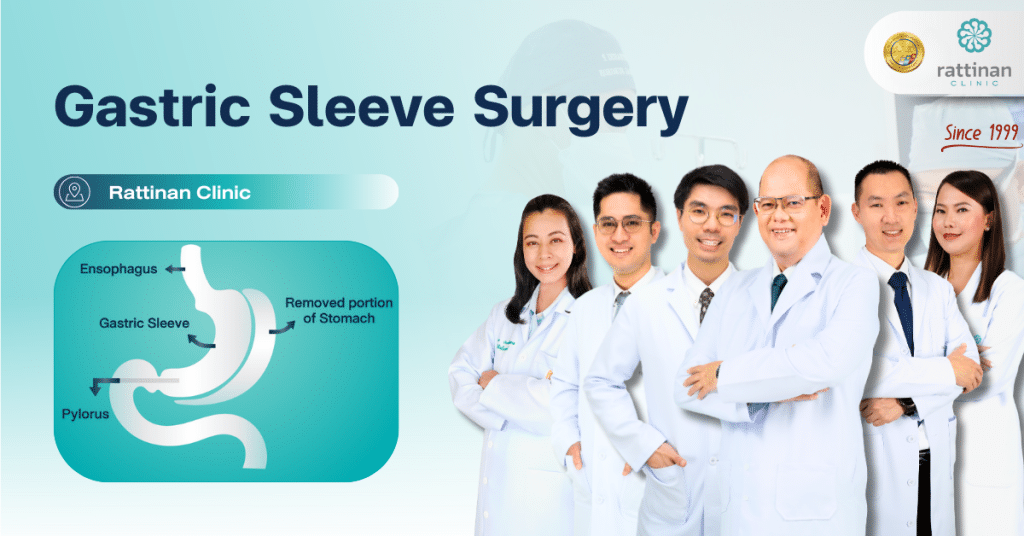
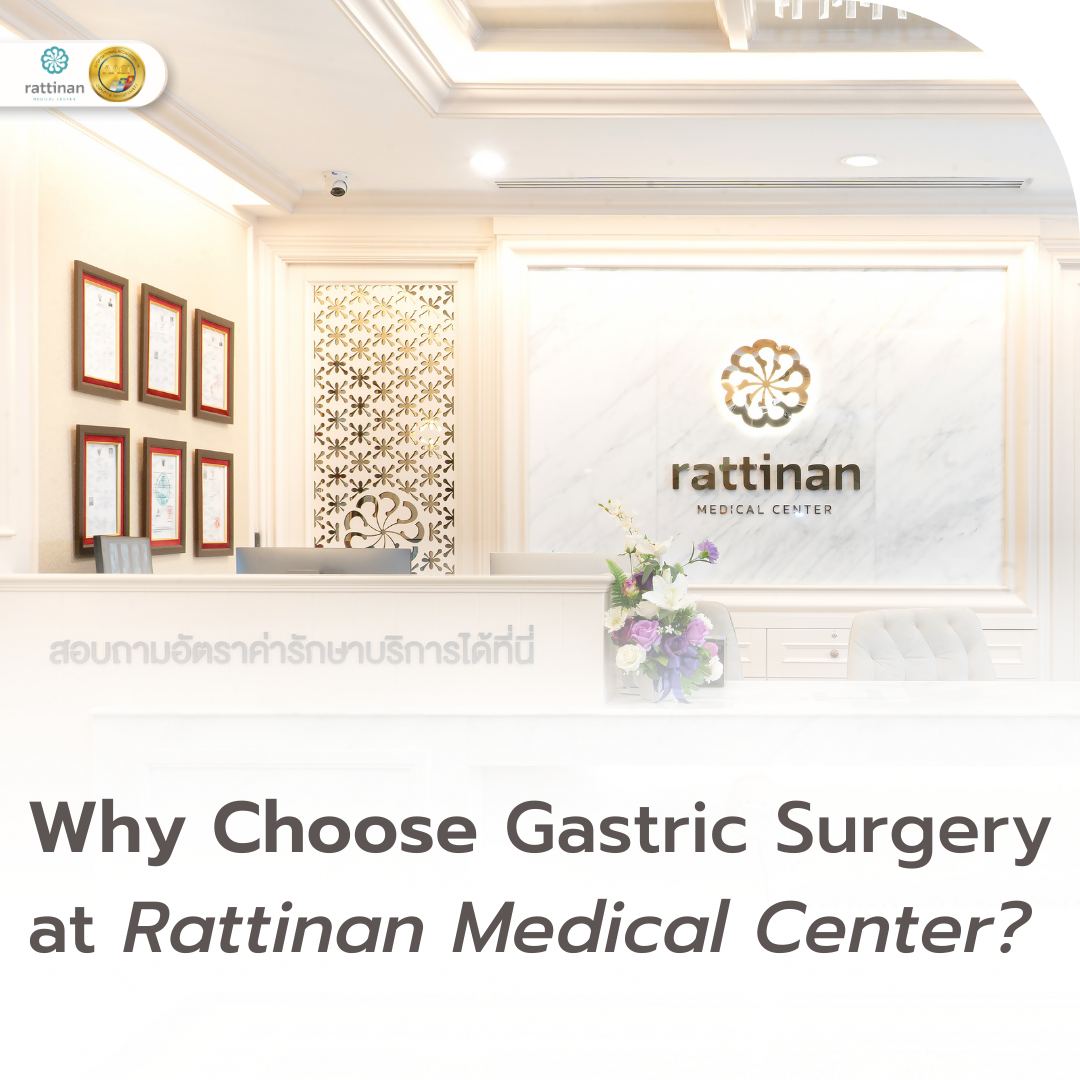
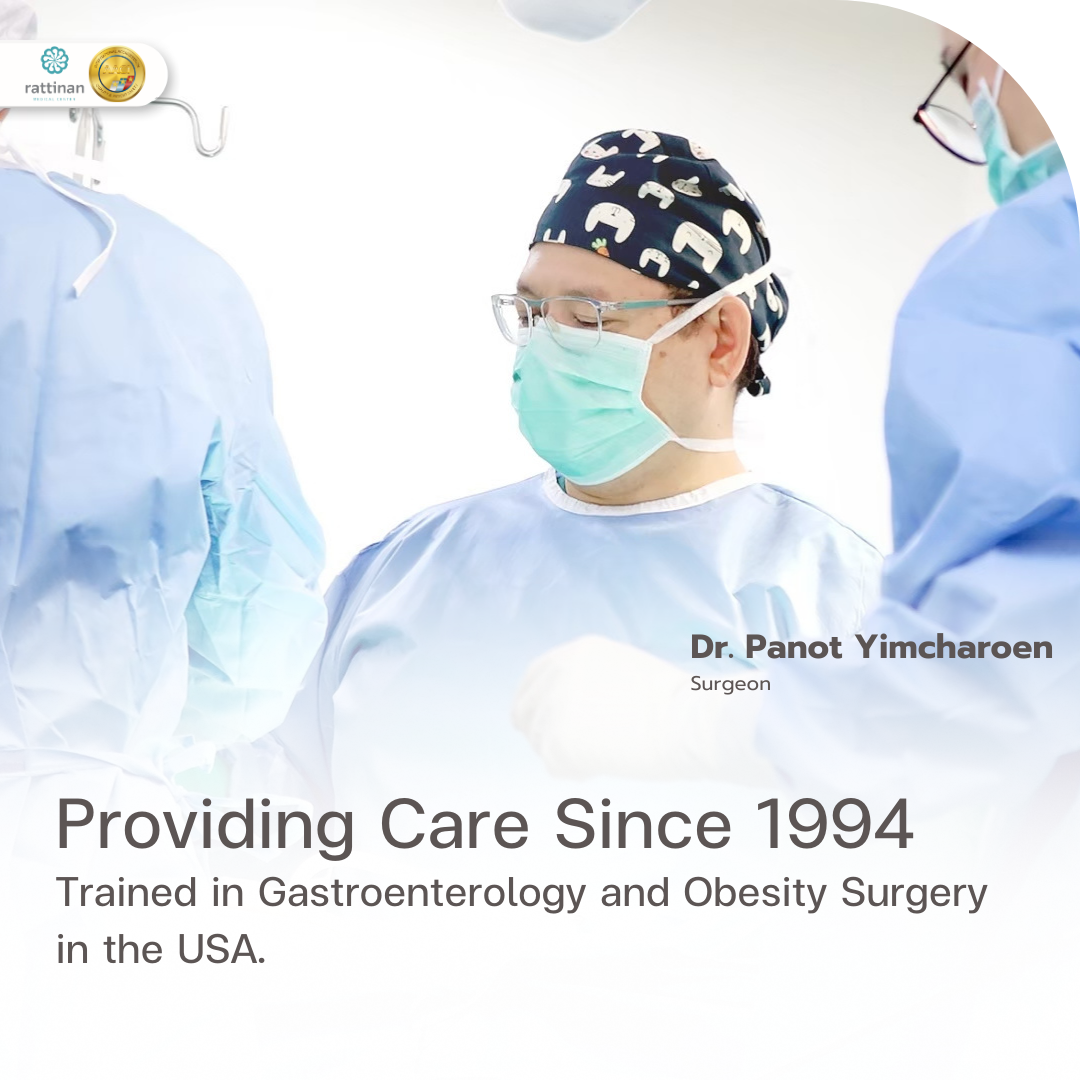
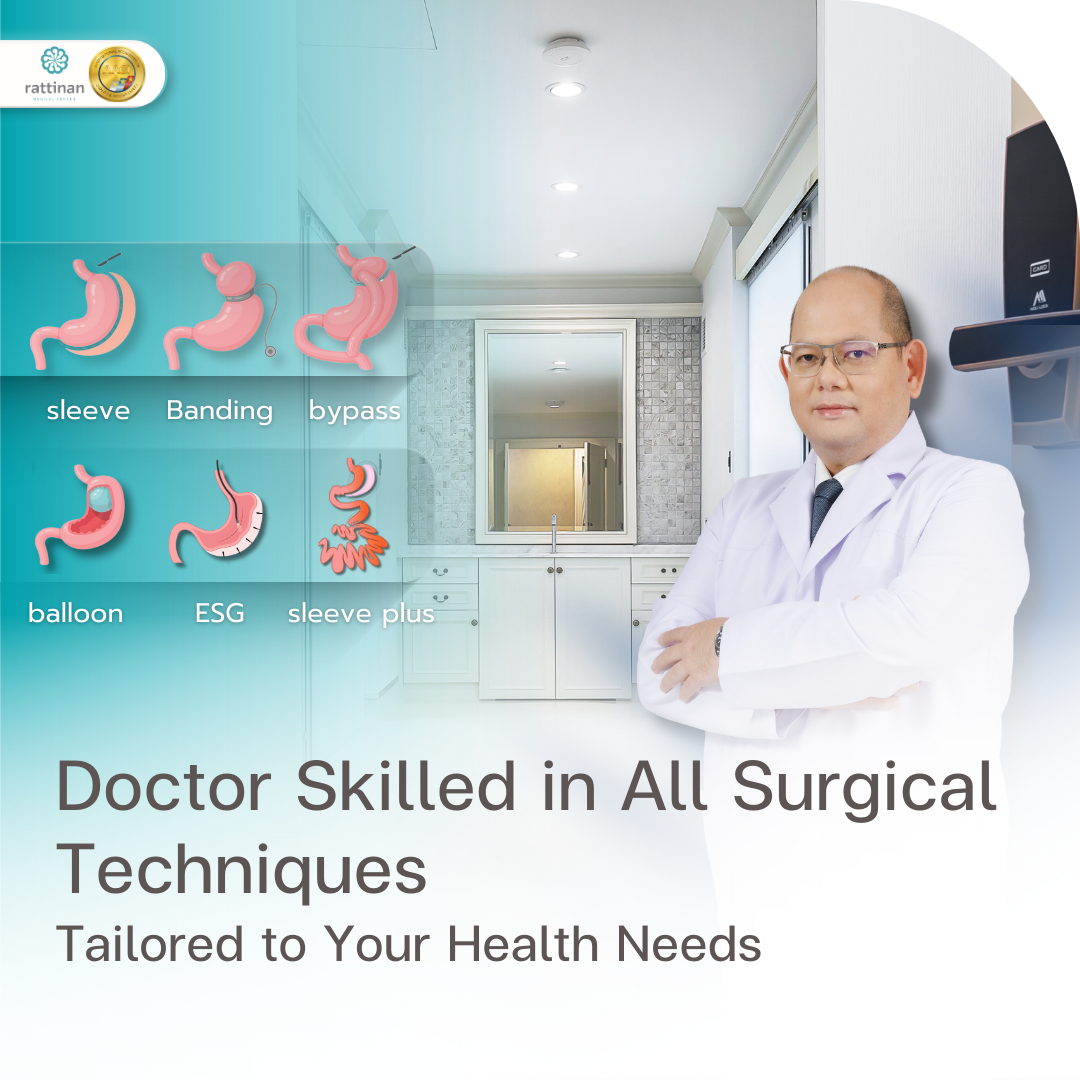
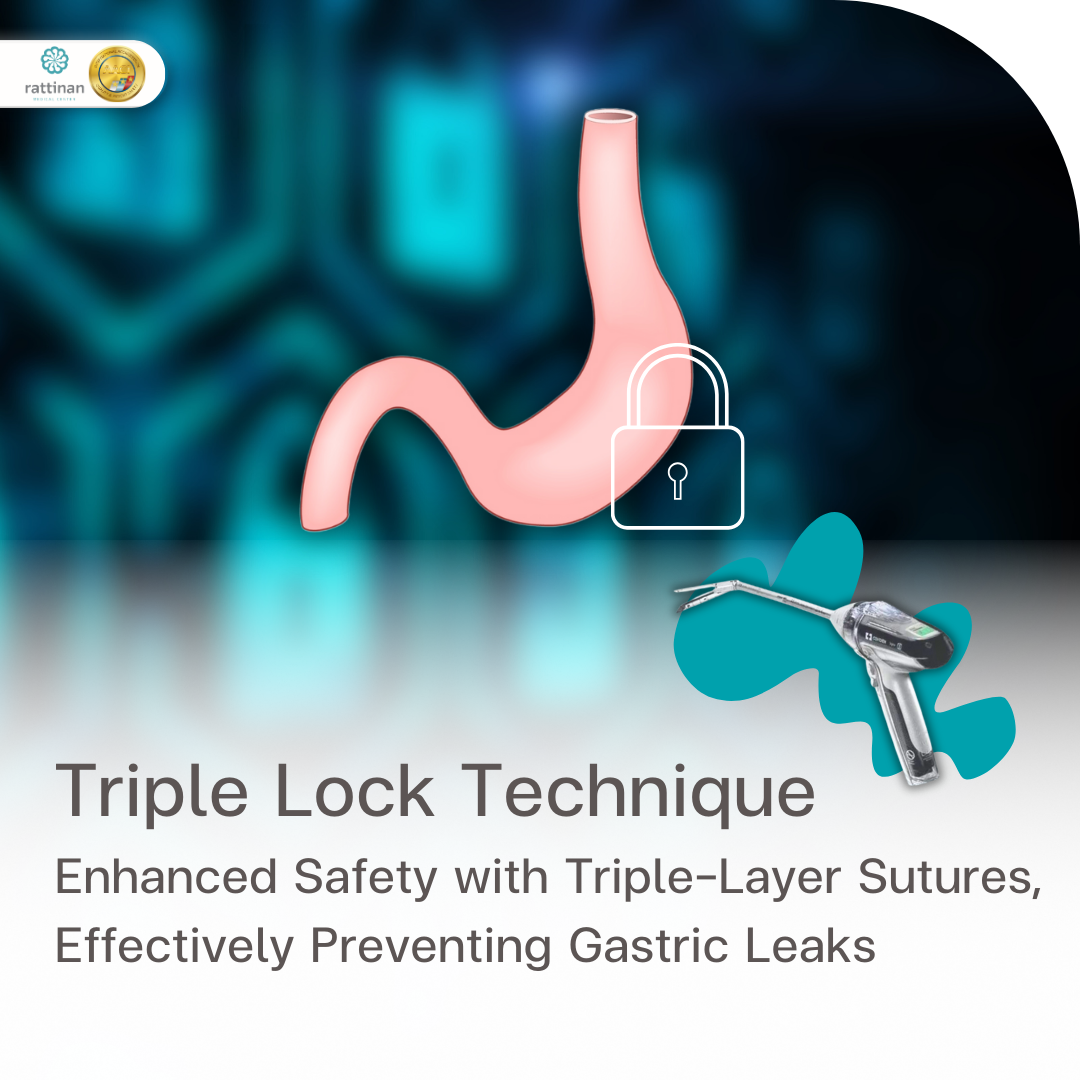
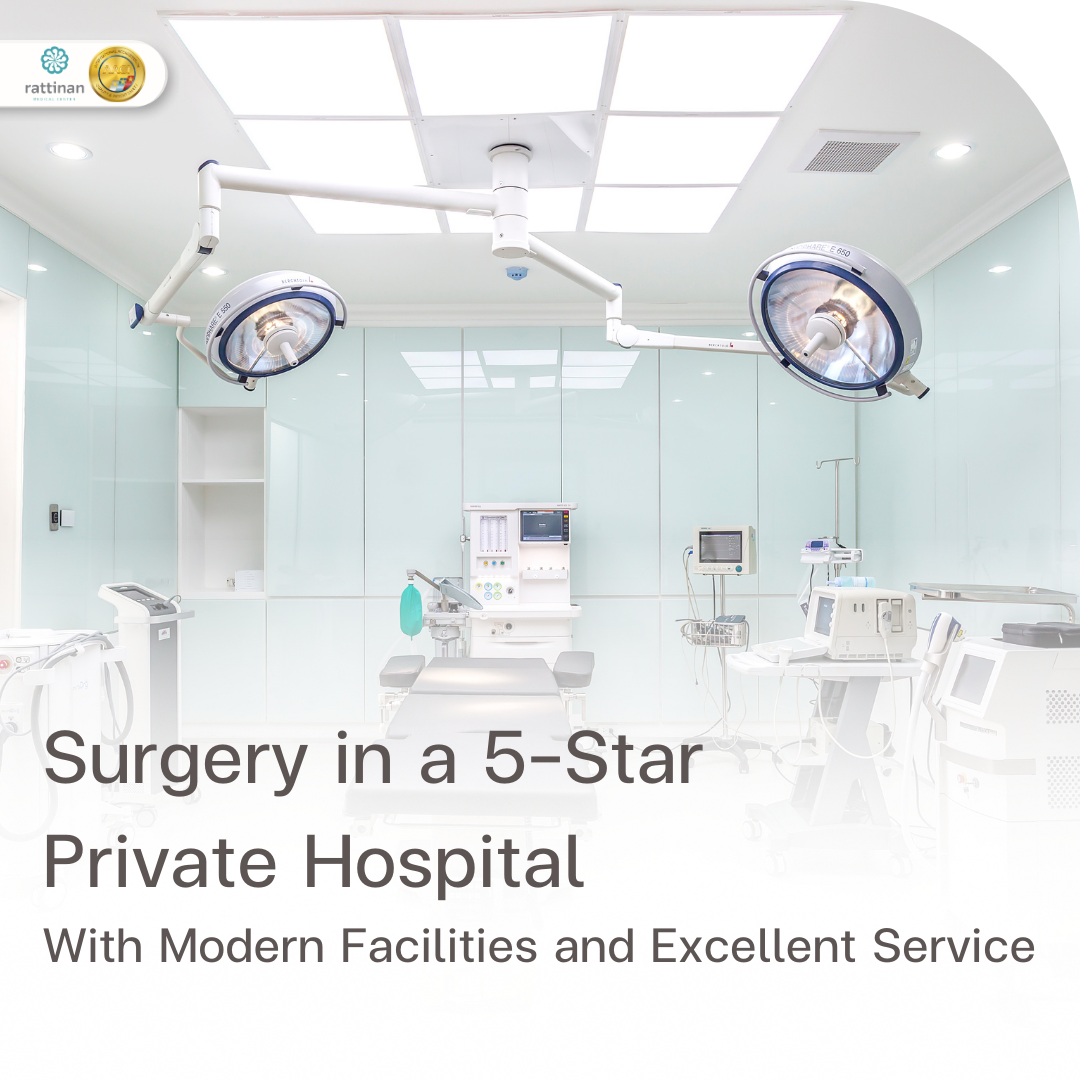
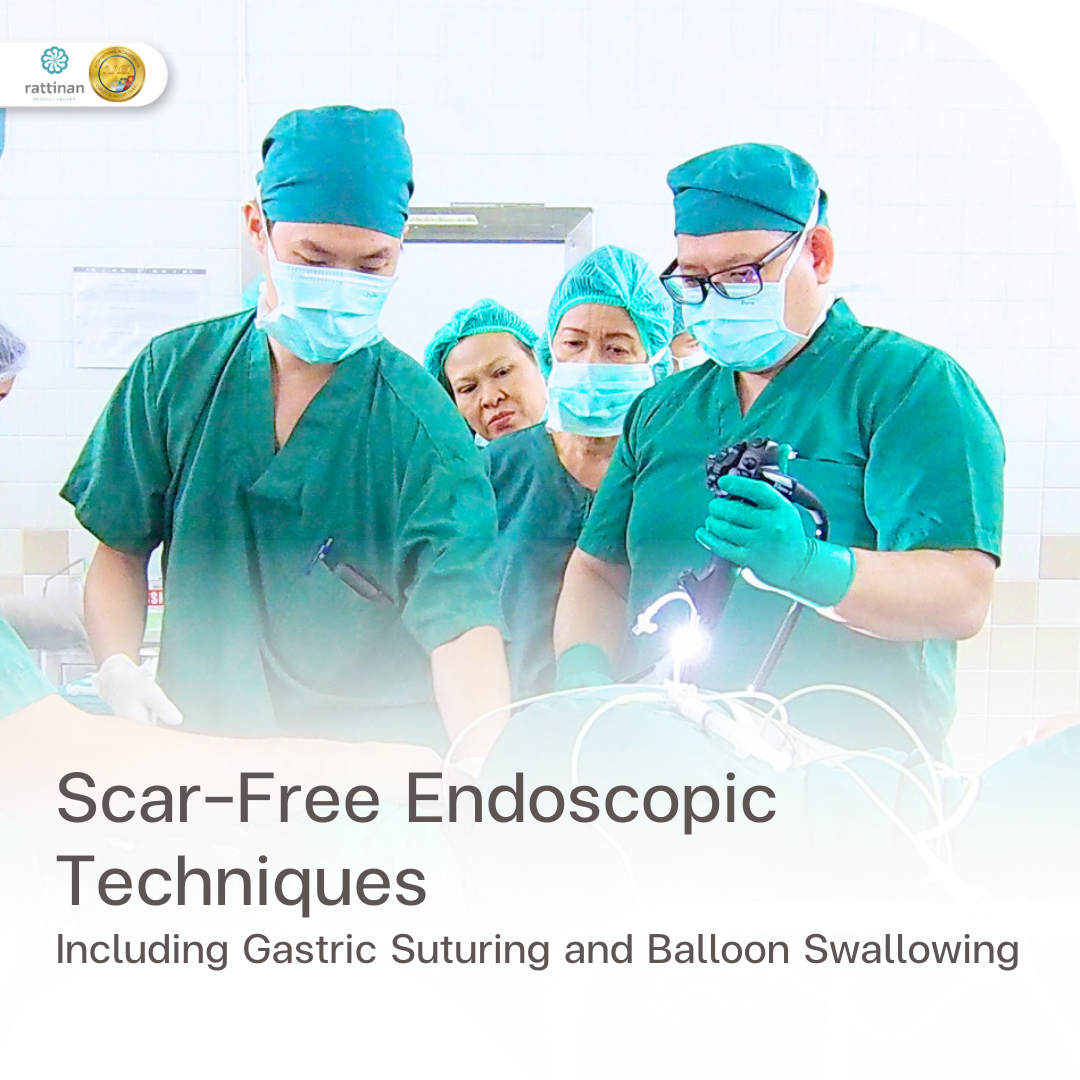
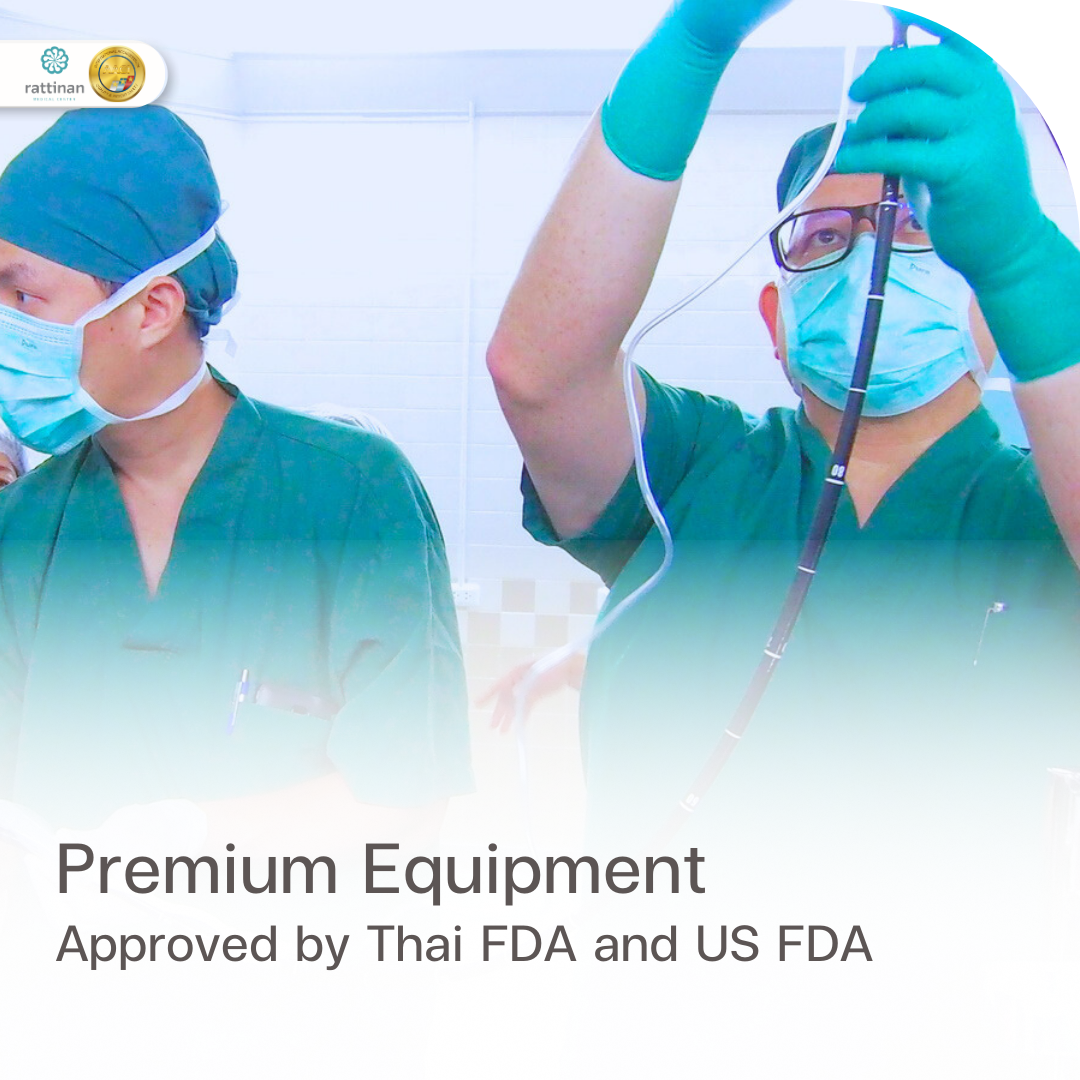
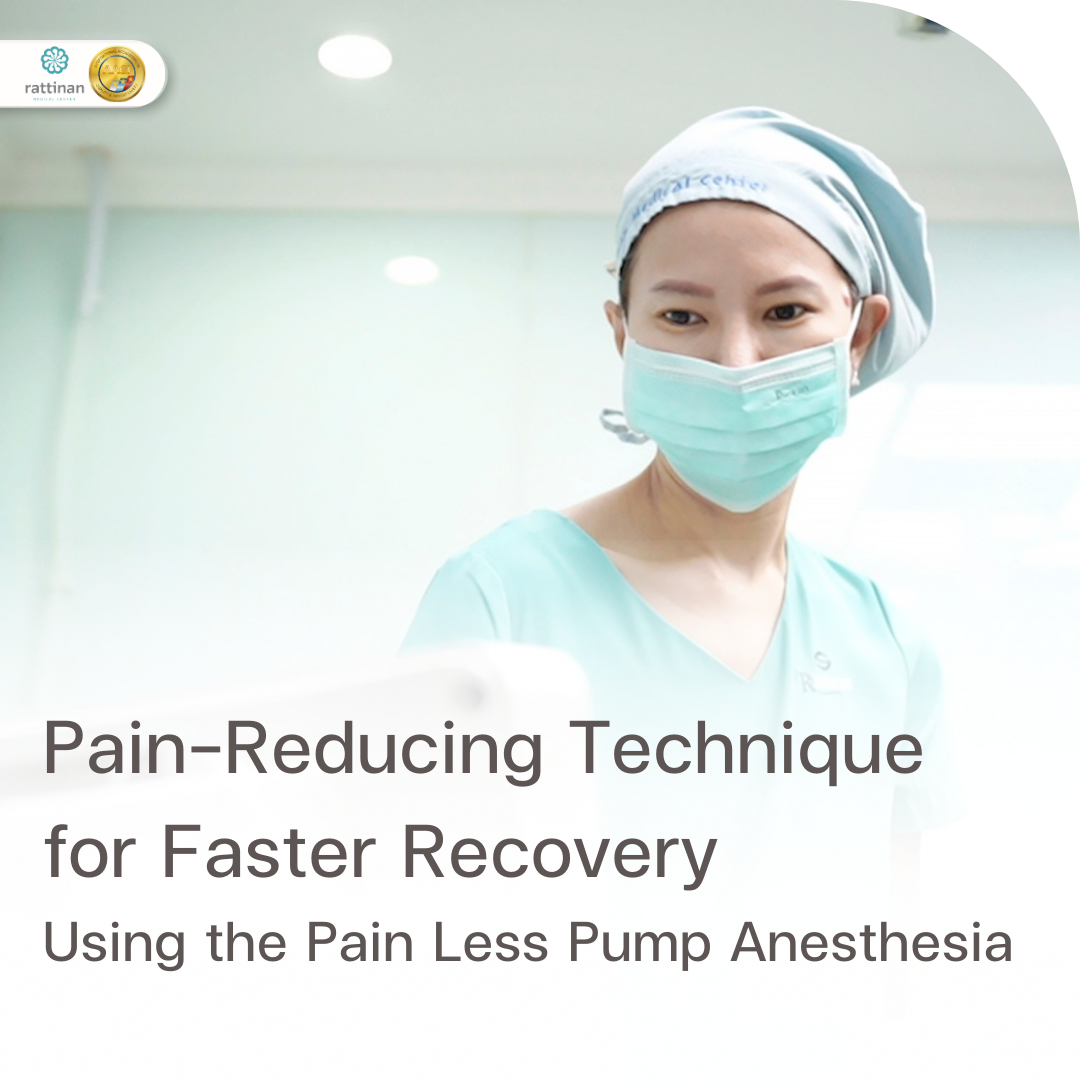
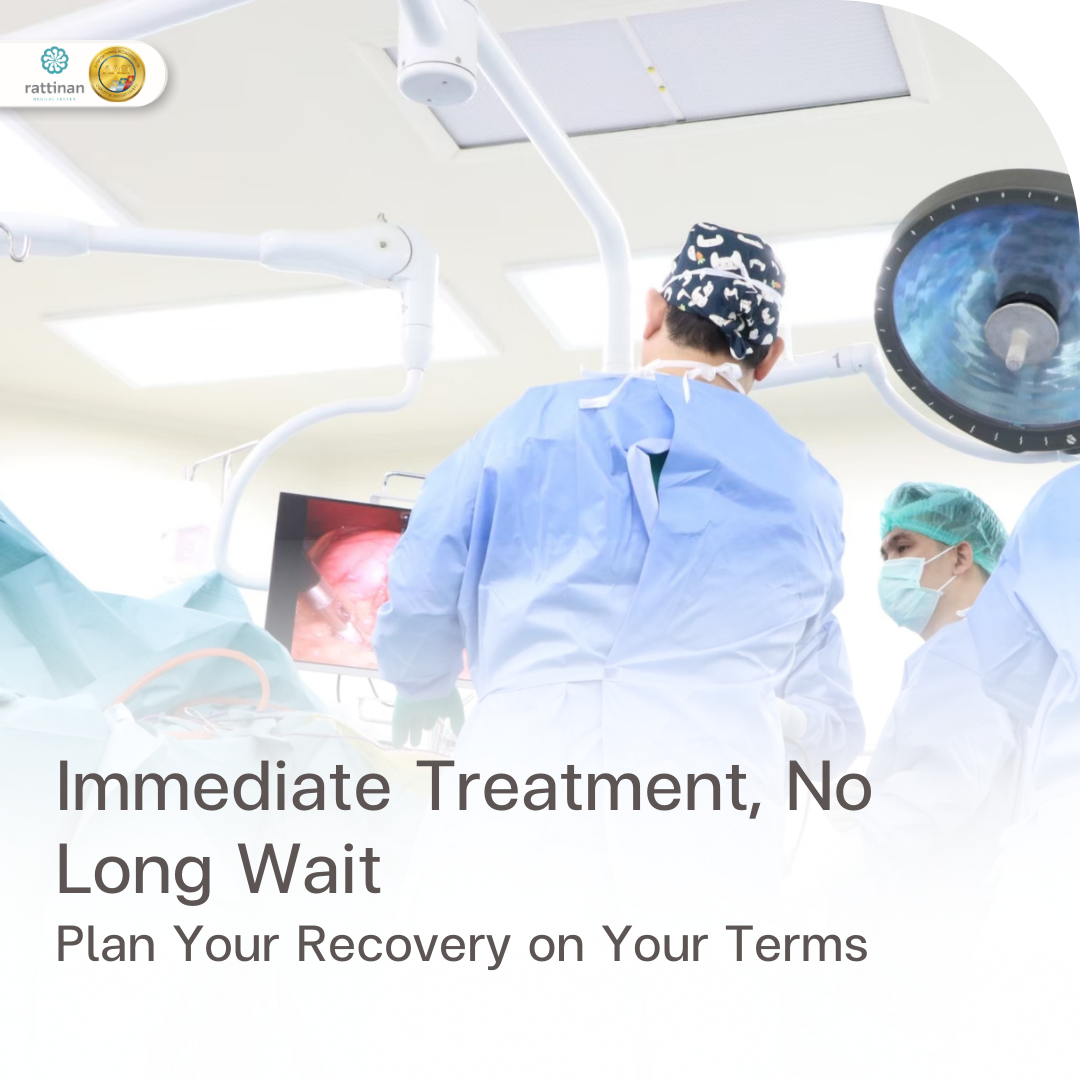
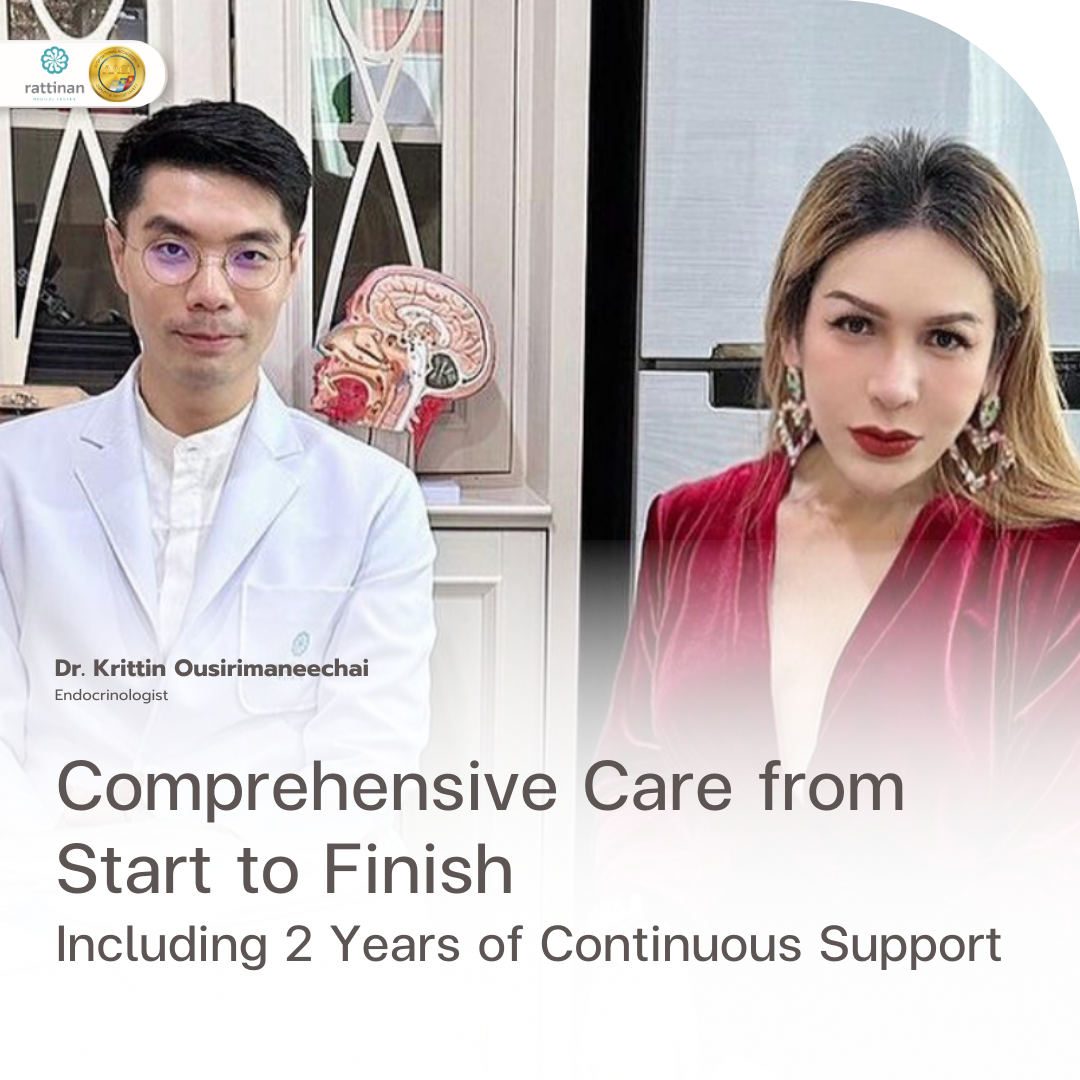
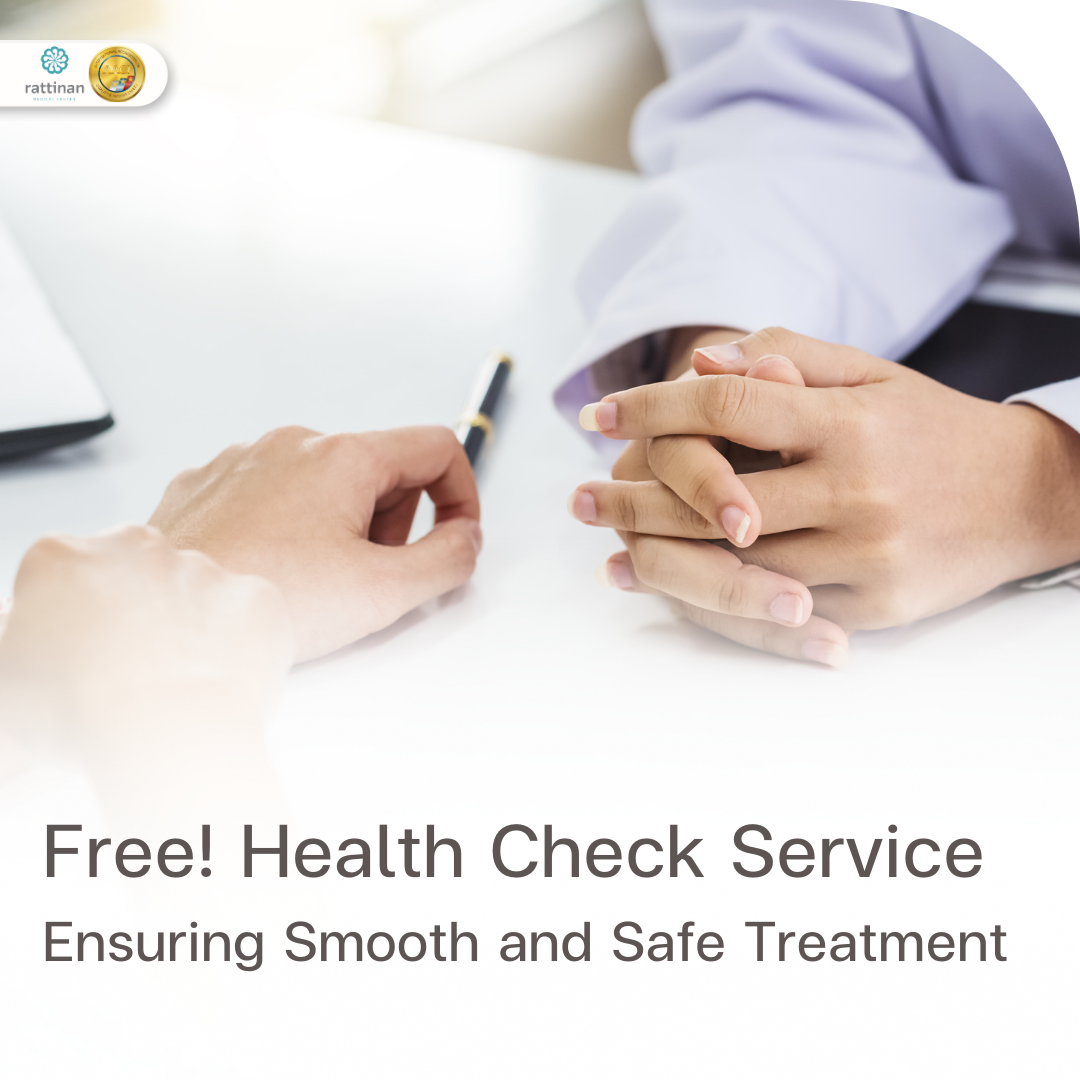
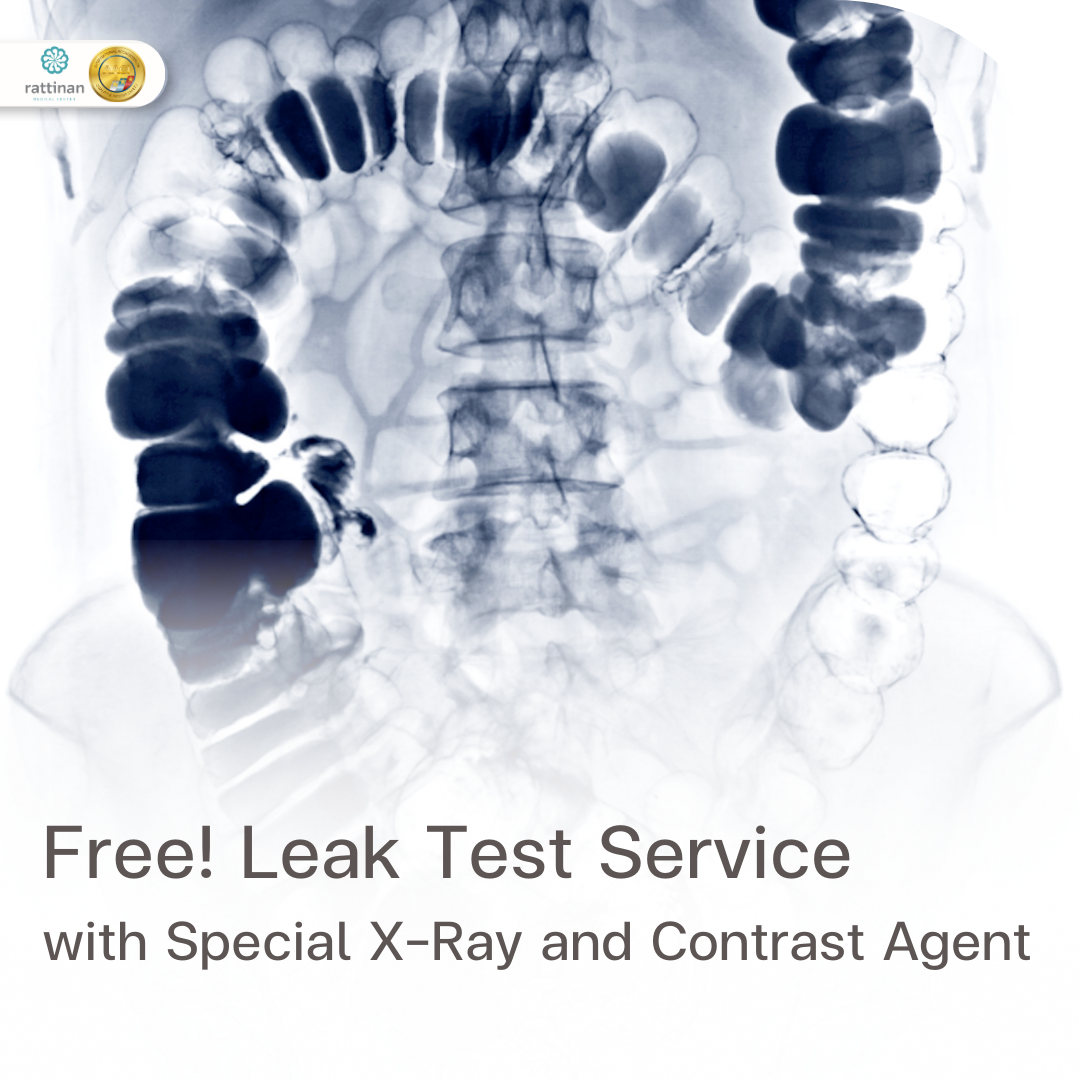
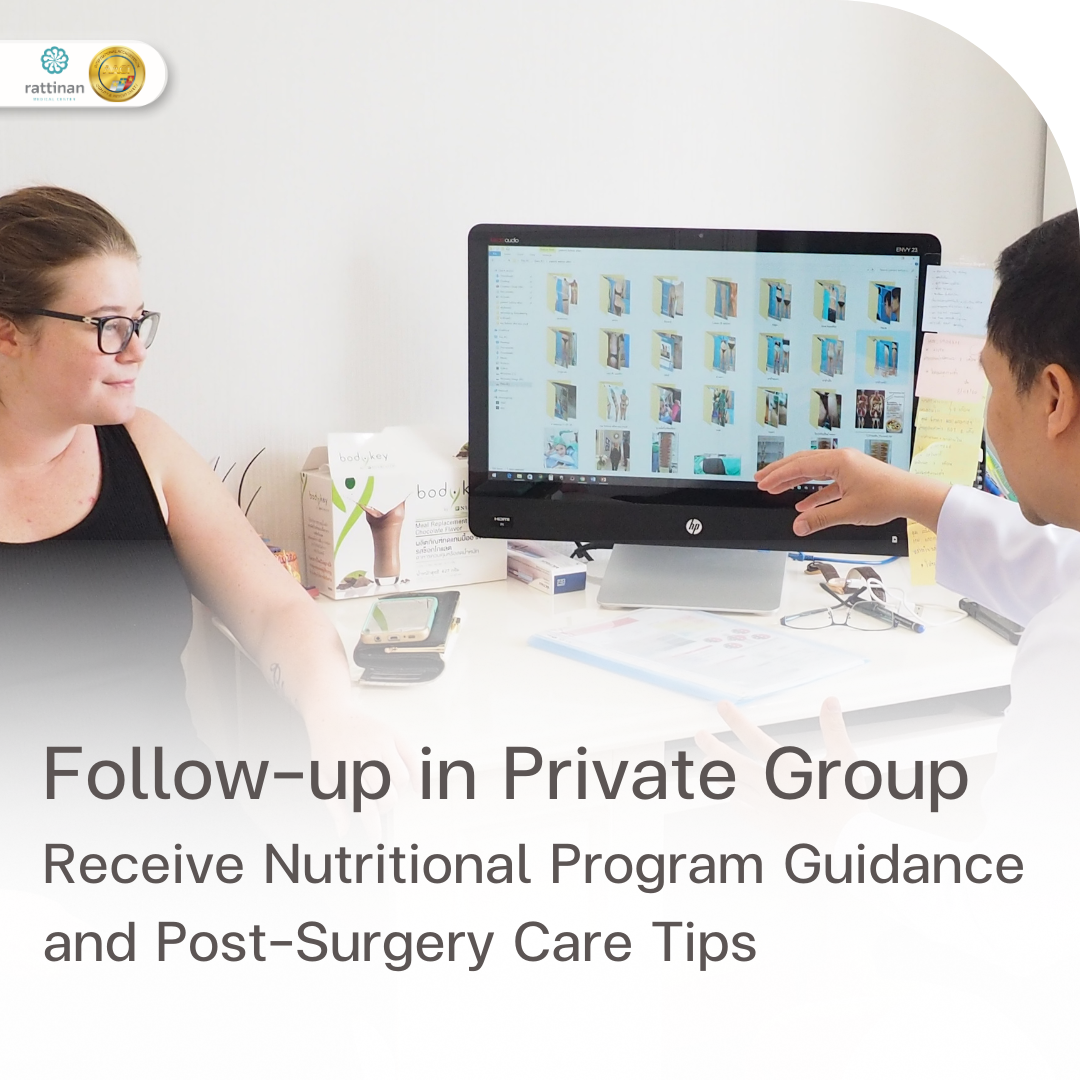





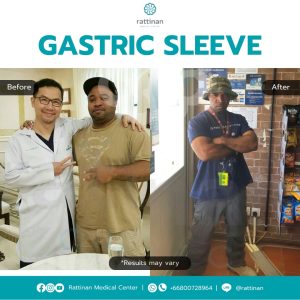
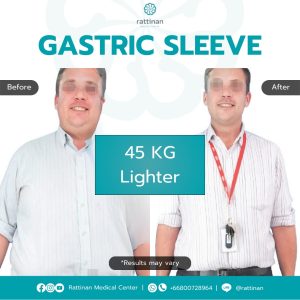

Dr. Suthipong Treeratana (Dr. Nueng) specializes in liposuction and body contouring surgery, focusing on personalized treatment plans to help you feel more confident in yourself.